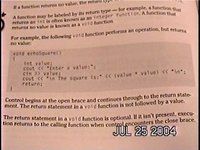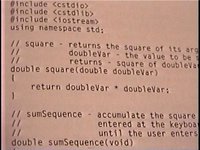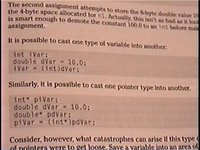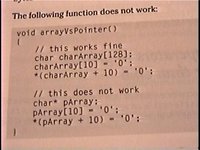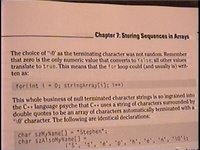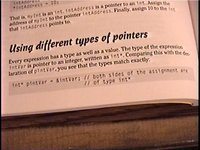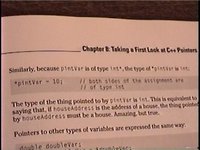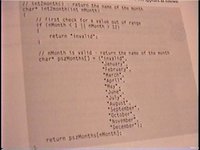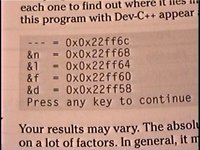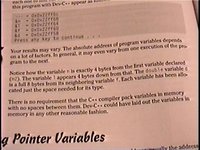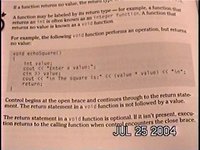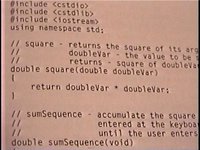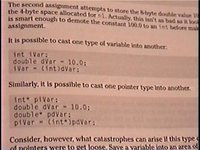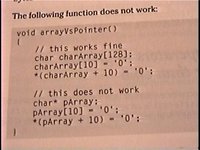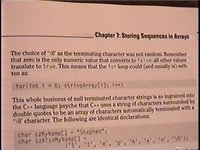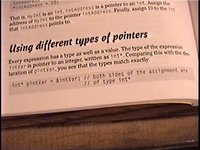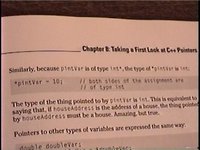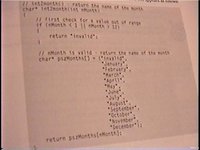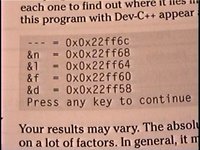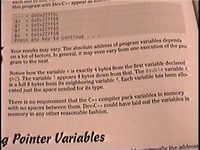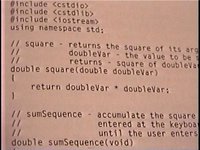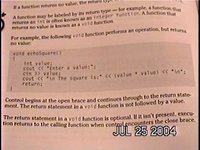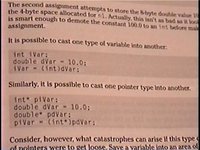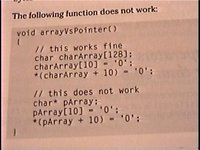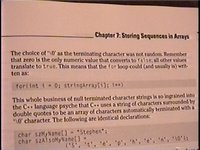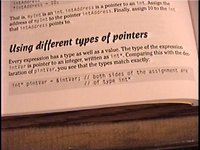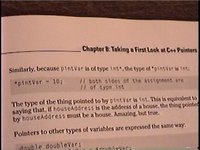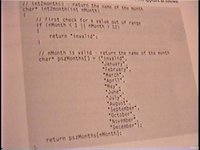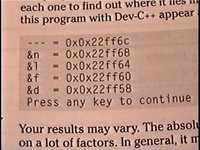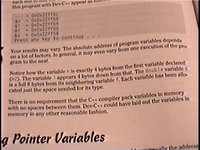Azure
Trust the recursion...
I'm having a little trouble understand a few things, so I decided that I would take a picture of what I don't understand from my C++ book.
Here's the first one:


In the first picture, the book says that in the full name, the second argument for the two functions is "int sizeOfloatArray." But in the second pic, when the functions are called, their second argument is "int sizeOfArray." What's up with this? Is this a typo or am I not understanding function arguments properly?
Here's the second one:

The middle paragraph confuses me. I get confused on which string he refers to in the paragraph. Which one (the string that's refers to an array or the type string) "includes operations for copying, concatenating, capitalizing, knotting," and which "one avoids the overrun problems inherent with null terminated strings?"
Next one:


Now I get confused on what these are. What are they? Are they bitwise operators? I thought the bitwise operators were &, |, etc. Second, are they really necessary? I can't think of how I would need them when writing a program. The way that the book used them is that it used them to "not" some hex numbers and output their value afterward. Is that their only use? So, do I really need to memorize these tables?
Thanks.
Here's the first one:
In the first picture, the book says that in the full name, the second argument for the two functions is "int sizeOfloatArray." But in the second pic, when the functions are called, their second argument is "int sizeOfArray." What's up with this? Is this a typo or am I not understanding function arguments properly?
Here's the second one:
The middle paragraph confuses me. I get confused on which string he refers to in the paragraph. Which one (the string that's refers to an array or the type string) "includes operations for copying, concatenating, capitalizing, knotting," and which "one avoids the overrun problems inherent with null terminated strings?"
Next one:
Now I get confused on what these are. What are they? Are they bitwise operators? I thought the bitwise operators were &, |, etc. Second, are they really necessary? I can't think of how I would need them when writing a program. The way that the book used them is that it used them to "not" some hex numbers and output their value afterward. Is that their only use? So, do I really need to memorize these tables?
Thanks.
Attachments
-
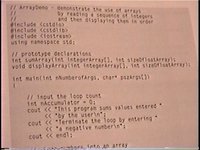 function_prototype.jpg34.5 KB · Views: 168
function_prototype.jpg34.5 KB · Views: 168 -
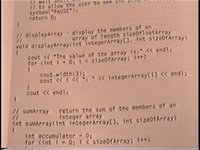 function_prototype_2.jpg34.2 KB · Views: 180
function_prototype_2.jpg34.2 KB · Views: 180 -
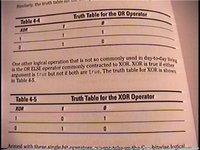 truth_table.jpg39.8 KB · Views: 182
truth_table.jpg39.8 KB · Views: 182 -
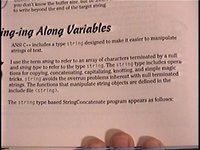 string.jpg37.3 KB · Views: 181
string.jpg37.3 KB · Views: 181 -
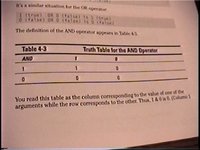 truth_table_2.jpg30.4 KB · Views: 172
truth_table_2.jpg30.4 KB · Views: 172 -
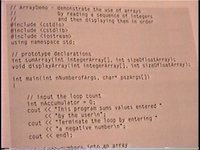 function_prototype.jpg34.5 KB · Views: 177
function_prototype.jpg34.5 KB · Views: 177 -
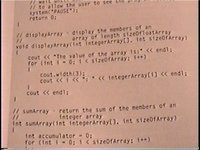 function_prototype_2.jpg34.2 KB · Views: 161
function_prototype_2.jpg34.2 KB · Views: 161 -
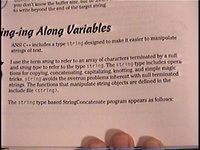 string.jpg37.3 KB · Views: 182
string.jpg37.3 KB · Views: 182 -
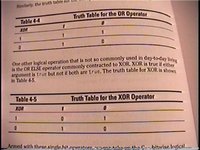 truth_table.jpg39.8 KB · Views: 173
truth_table.jpg39.8 KB · Views: 173 -
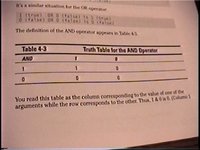 truth_table_2.jpg30.4 KB · Views: 185
truth_table_2.jpg30.4 KB · Views: 185 -
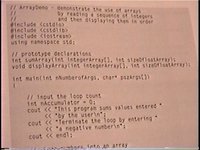 function_prototype.jpg34.5 KB · Views: 174
function_prototype.jpg34.5 KB · Views: 174 -
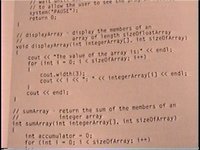 function_prototype_2.jpg34.2 KB · Views: 184
function_prototype_2.jpg34.2 KB · Views: 184 -
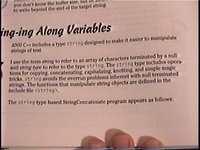 string.jpg37.3 KB · Views: 180
string.jpg37.3 KB · Views: 180 -
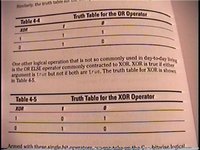 truth_table.jpg39.8 KB · Views: 175
truth_table.jpg39.8 KB · Views: 175 -
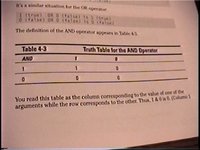 truth_table_2.jpg30.4 KB · Views: 177
truth_table_2.jpg30.4 KB · Views: 177


